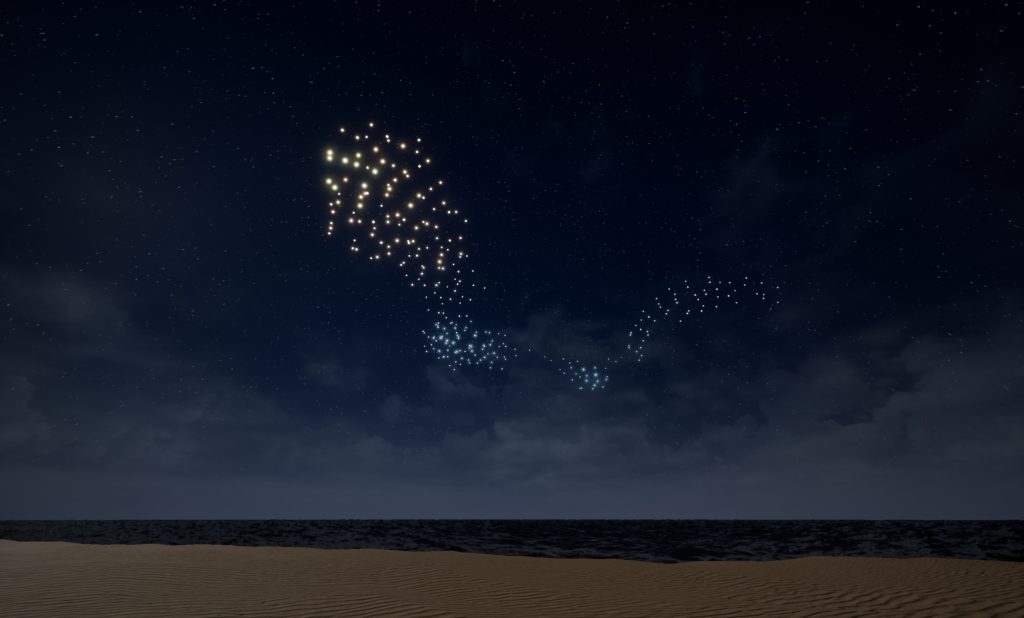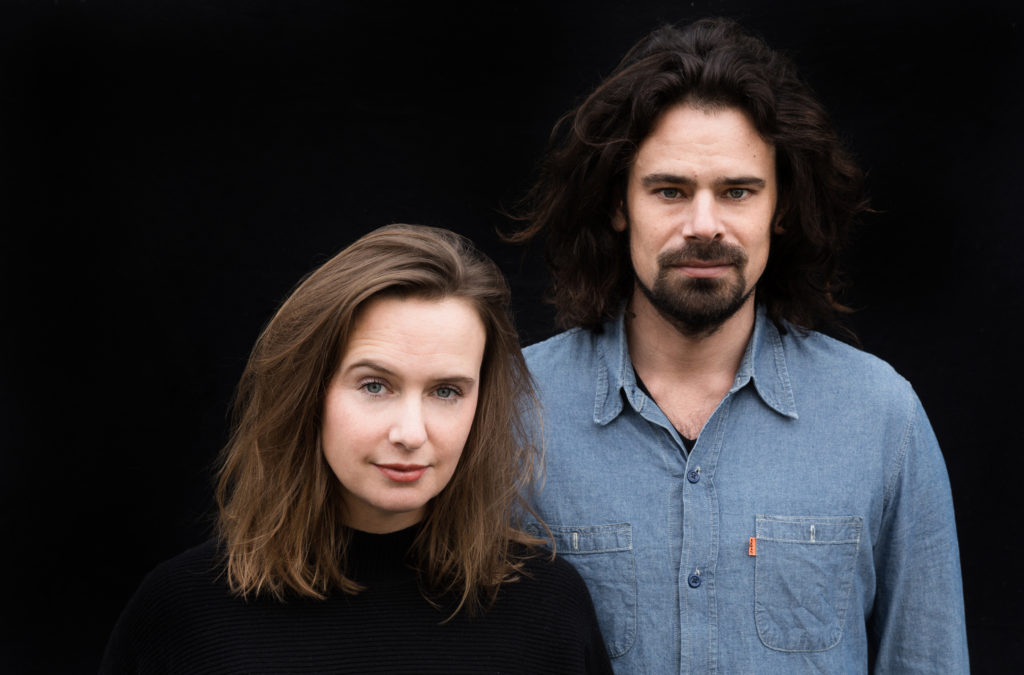Art World
A Swarm of Drones Is Performing a High-Tech Version of the Flight of the Starlings at Art Basel
The artists see profound questions about human behavior in that of the birds.

The artists see profound questions about human behavior in that of the birds.

Brian Boucher

If you’re headed to the art fairs in Miami this week, be sure to watch the night skies. You may just see a flock of starlings moving in a captivating formation called a murmuration—except these won’t be birds, but rather drones.
Franchise Freedom, a new project by the Amsterdam artist duo Studio Drift, will, starting Thursday night, send aloft over the oceanfront some 300 of the machines, which will emulate the mesmerizing movements of starlings. It’s only their latest project involving flight; if you were at the Armory Show fair in New York this year, you probably saw their giant floating faux-concrete block, dubbed “easily the most mesmerizing piece of showmanship at the fair” by artnet News’s Andrew Goldstein.
The artists, Netherlandish-born Lonneke Gordijn and English-born Ralph Nauta, have studied the creatures’ habits for years and see in their airborne ballet questions about the balance between free will and programmed behavior (and not just in birds).
“You’re looking at this beautiful dance in the sky, and what always fascinated us the most was the weird illusion of freedom,” Nauta told artnet News by phone from Miami, where he was finishing up preparations for the launch. “But it’s actually a collective intelligence.”

Lonneke Gordijn and Ralph Nauta, Studio Drift. Photo by J.W. Kaldenbach.
The more they looked at the birds’ flight, he said, the more they saw a parallel with our own conduct. “At first, human behavior seems to be without structure,” he said, just as the birds’ behavior might. “But the more you look, the more structure and the less freedom you see,” he said. In fact, he said, they ended up believing that, with humans as with the birds, “There’s zero freedom.”
That explains the project’s name. When businesses set up franchised locations, they demand a highly formulaic, programmed product. In the artists’ view, humankind and the products we design too often end up similarly funneled onto well-trod paths.
The technology behind the piece is all a little above this reporter’s head, even after a patient explanation from Nauta. It involves academic papers translated into visual translators, followed by reverse-engineering and coding fed into the game engine Unreal. Even Mollie Dent-Brocklehurst, co-founder of international powerhouse Pace Gallery’s initiative Future\Pace, which represents Studio Drift, confessed to being in over her head. “I know it’s very, very ambitious even though I couldn’t begin to tell you what’s involved!” she said. And Dent is no slouch; she also works with tech wizards like Japan’s 400-strong teamLab and Random International, they of the famed Rain Room. “But it all comes down to mathematics and algorithms, and aren’t we all a big mathematical algorithm, working together in some way?”

Studio Drift’s Franchise Freedom (rendering), 2017. © Studio Drift.
Studio Drift is far from alone in working with virtual reality and augmented reality, but Nauta sees a clear distinction between Studio Drift’s work and, say, Jeff Koons’s recent collaboration with Snapchat, which simply involves balloon dogs and silvery rabbits plopped down in scenic locations. That project wasn’t universally well-received—artist Sebastian Errazuriz even digitally vandalized Koons’s Central Park balloon dog in a virtual protest—and Nauta was similarly unimpressed.
“It pisses me off so hard,” Nauta said off the Koons project. “There’s a whole generation of artists who have been working on tech-related art and developing new technologies, and then you have artists like Koons, who get the technology handed over on a platter. With him, it’s just a tack-on, whereas this is who we are.”
Perhaps counterintuitively, the end result of the duo’s dark meditations on human nature certainly aims to be seductive.
“Yes, there’s a contradiction there,” Nauta acknowledged. “We are trying to create something you stand in front of and feel like, ‘How is this possible?’ If you can’t create an emotion, there’s no reason for the viewer to engage with it.”
Weather permitting, the swarm will appear at 8 p.m. each evening, Thursday through Sunday, over the Faena Hotel, at 3201 Collins Avenue; in case of inclement weather, they’ll try for 10 p.m. Follow Studio Drift’s Instagram for updates.